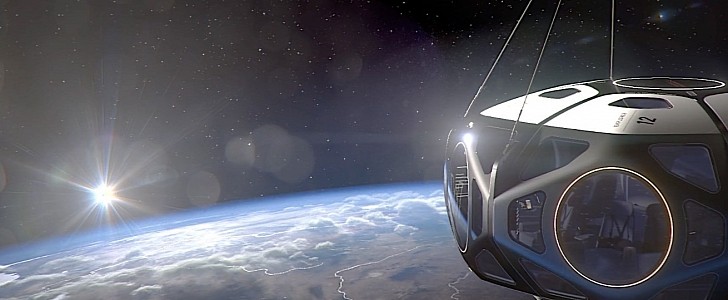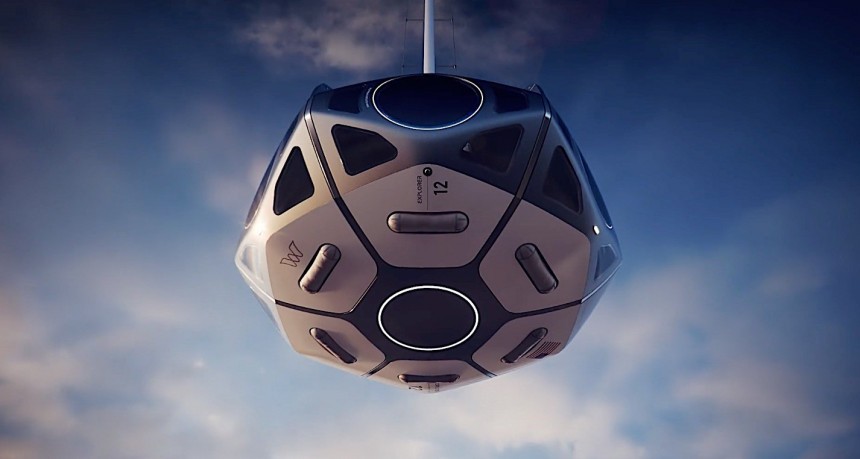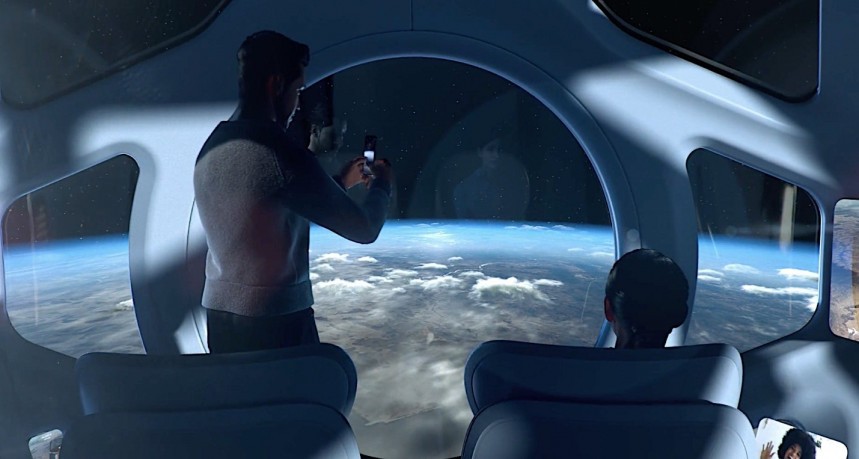Generally speaking, when we common folk think about tourist hot-air balloons, we get into our heads this idea of brightly-colored pieces of nylon or something, lifting into the air a nacelle filled with more or less frightened people. But there are other, more impressive balloons out there, and they’ll probably be carrying people much higher soon enough.
We call them stratospheric balloons, devices that can reach very high altitudes, and have done so for meteorological and other reasons for years now. On a couple of occasions, they were even used to carry daredevils up there, for the single reason these guys wanted to jump from very high up.
Having seen how balloons are incredibly safe, and potential moneymakers, companies are now trying to see how they could be used for tourism, and make them some money in the process. And we’ve already seen how one entity called Space Perspective is planning to do that with the Spaceship Neptune.
But Space Perspective is not alone in this. Another group, one that calls itself World View, is proposing mostly the same thing: take people to an altitude of 100,000 feet (30 km), just for thrills and in exchange for money.
The principle is mostly the same. A so-called Strato-Balloon will carry with it a large capsule called Explorer (because at 100,000 feet, you can’t really use a basket), float up there for a while, and then bring the tourists back for an airbag-assisted landing.
Just like in the case of the Spaceship Neptune, this capsule will be capable of seating eight passengers, but two crew members instead of one. Aside for seats, the capsule also comes with “well-appointed galley at your leisure during your flight with dining options and full bar befitting such a journey.”
It too is pressurized and climate-controlled, but aside for the large windows it’s equipped with, it also offers on-board video cameras for snapping instances of memorable moments, and telescopes so that people could look down to the planet (or up to the black sky) in search of whatever view is of interest to them. Because true, the maximum altitude might not be actually space, but it’s high enough to see the curvature of the planet, and all the wonders it has to show for.
Now, the Spaceship Neptune experience is supposed to last for two hours at maximum altitude, and for that Space Perspective will charge $125,000 - half of what Virgin Galactic is asking for about ten minutes of actual spaceflight.
For what it’s worth, World View is even cheaper. For $50,000 per seat - you can reserve one for just $500, and go for financing, if you think that’s wise – the company promises “5 days experiencing the biodiversity of the world’s largest rainforest with local guides then float up to take in its grandeur and fragility from 100,000 feet.”
If you’re wondering what that means, you should know that unlike the competition, which will launch its balloons from the Kennedy Space Center, this crew has no less than seven locations in mind: the Grand Canyon, the Great Barrier Reef, Serengeti, Norway (for the aurora borealis), Brazil (for the Amazon), the pyramids of Giza, and the Chinese Great Wall.
As for how far along from becoming a reality such a thing is, World View says the balloon design it plans to use already has over 100 flights to its name, five of which “capsule-sized.”
The first two locations are slotted to begin operations in 2024, with the others following over the next two years. It’s unclear whether the five days with a local guide, and then the flight, will be available for all locations, but chances are they probably will.
Having seen how balloons are incredibly safe, and potential moneymakers, companies are now trying to see how they could be used for tourism, and make them some money in the process. And we’ve already seen how one entity called Space Perspective is planning to do that with the Spaceship Neptune.
But Space Perspective is not alone in this. Another group, one that calls itself World View, is proposing mostly the same thing: take people to an altitude of 100,000 feet (30 km), just for thrills and in exchange for money.
The principle is mostly the same. A so-called Strato-Balloon will carry with it a large capsule called Explorer (because at 100,000 feet, you can’t really use a basket), float up there for a while, and then bring the tourists back for an airbag-assisted landing.
It too is pressurized and climate-controlled, but aside for the large windows it’s equipped with, it also offers on-board video cameras for snapping instances of memorable moments, and telescopes so that people could look down to the planet (or up to the black sky) in search of whatever view is of interest to them. Because true, the maximum altitude might not be actually space, but it’s high enough to see the curvature of the planet, and all the wonders it has to show for.
Now, the Spaceship Neptune experience is supposed to last for two hours at maximum altitude, and for that Space Perspective will charge $125,000 - half of what Virgin Galactic is asking for about ten minutes of actual spaceflight.
For what it’s worth, World View is even cheaper. For $50,000 per seat - you can reserve one for just $500, and go for financing, if you think that’s wise – the company promises “5 days experiencing the biodiversity of the world’s largest rainforest with local guides then float up to take in its grandeur and fragility from 100,000 feet.”
As for how far along from becoming a reality such a thing is, World View says the balloon design it plans to use already has over 100 flights to its name, five of which “capsule-sized.”
The first two locations are slotted to begin operations in 2024, with the others following over the next two years. It’s unclear whether the five days with a local guide, and then the flight, will be available for all locations, but chances are they probably will.


























